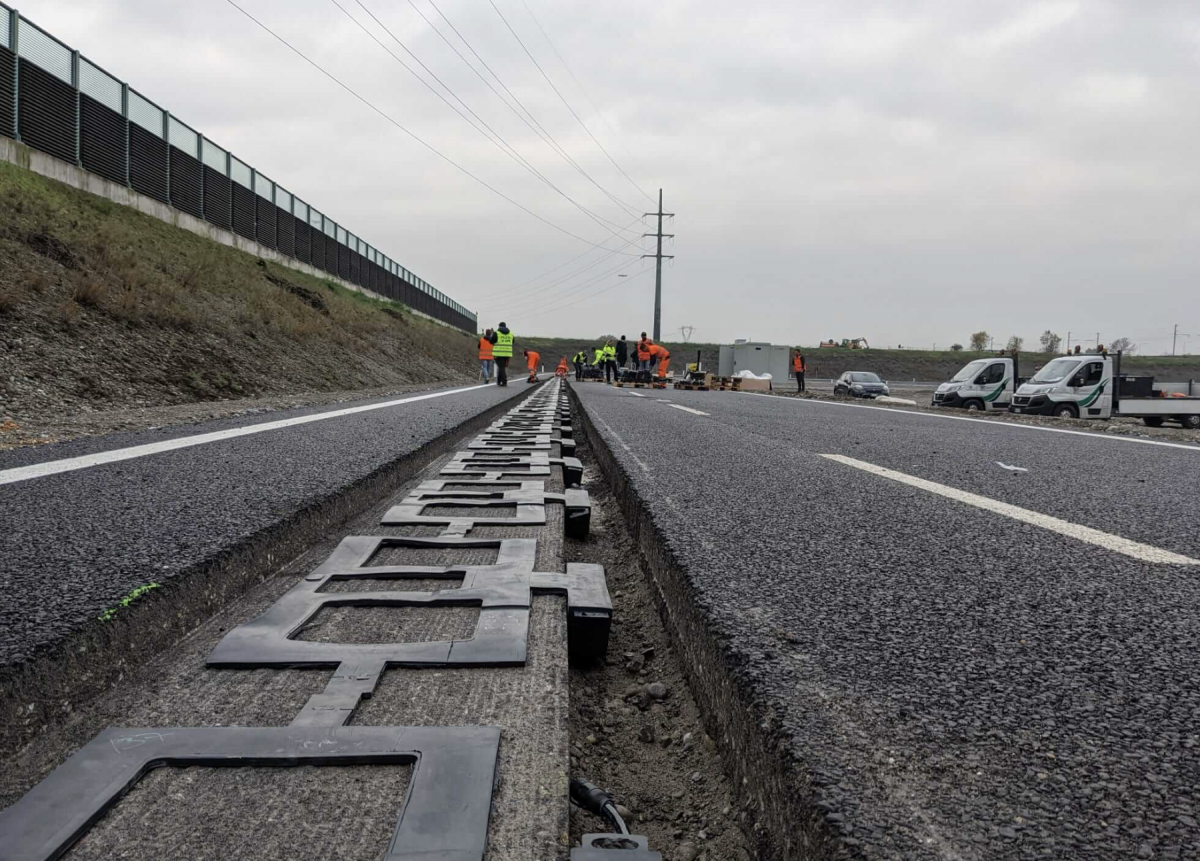In a business where uptime is paramount, any form of downtime gets the warning lights flashing for long-haul truck fleet managers.
 A study carried out by members of the Truckload Carriers Association (TCA) has revealed that exposure to jarring and shaking has a significant impact on driver fatigue and pain, a key contributor to downtime, particularly in an industry which struggles to recruit and retain drivers. OEMs are developing trucks that help fleet operators achieve high fuel efficiency, but there remains a challenge in maintaining efficient operations. In short, this means increased downtime, decreased revenue, and an industry that is struggling to keep drivers behind the wheel.
A study carried out by members of the Truckload Carriers Association (TCA) has revealed that exposure to jarring and shaking has a significant impact on driver fatigue and pain, a key contributor to downtime, particularly in an industry which struggles to recruit and retain drivers. OEMs are developing trucks that help fleet operators achieve high fuel efficiency, but there remains a challenge in maintaining efficient operations. In short, this means increased downtime, decreased revenue, and an industry that is struggling to keep drivers behind the wheel.
The cab is the driver’s office, place of work, and home. For the average passenger car commuter, road noise, vibration and harshness (NVH) is in most cases no more than a nuisance, but for long-haul truck drivers travelling day and night, it can be dangerous. In fact, long haul truck driving is one of the top ten most dangerous jobs in the US, according to Forbes. The combination of long hours, quick turnarounds, and the stress of operating heavy machinery all contribute to its ranking.
Driver health is becoming an increasingly important issue. To address this issue, a new under-seat suspension system has been developed by Bose, a company known primarily as a supplier of high quality sound systems. The suspension technology – which completely replaces a traditional truck seat – counteracts vibrations from the road. Ride quality is improved by responding to changing conditions in road surfaces and continually analysing forces from the road, and counteracting these vibrations before the driver can feel them.
Play to your strengths

Why has a supplier that primarily develops audio equipment produced an anti-vibration seat for trucks? Mike Rosen, General Manager, Bose Ride Systems, explained to Megatrends that a “deep expertise in electromagnetic motion control is part of how we make our speaker systems. This knowledge was utilised in helping to develop the Bose Ride system and its regenerative electromagnetic motor.”
In the early 1980s, the company’s founder, Dr. Amar Bose, began research in automotive suspension systems using electromagnetic technologies. In 1994, the company extended this research in an attempt to solve the problem of shaking and jolting that affects heavy-duty truck drivers. The first generation of the system was introduced five years ago, and was updated earlier in 2015.
A conventional air-suspension truck seat is replaced with a Bose suspension base and a third-party seat top to protect drivers from road-induced shocks and vibration. The system achieves this by sensing, analysing, and counteracting the forces from the road. “As a result, it is proven to dramatically reduce the fatigue and pain experienced every day by heavy-duty truck drivers,” explained Rosen.
“Truck drivers spend around 11 hours a day on the road, suffering a ride that is much worse than a passenger car,” he added. “Even with the best conventional air-suspension seats, these drivers experience constant road-induced shaking, bumps and jolts – a form of what is referred to as whole-body vibration (WBV).”
Independent scientific research has shown that WBV can increase fatigue, put stress on the driver’s spine and body, and drastically reduce comfort levels. Rosen believes these issues contribute to many of the transportation industry’s challenges, including driver attrition, reduced driver productivity, increased health care costs, and safety concerns. In short, these are “factors that impact and disrupt business.”
A matter of economics
Keeping drivers healthy and happy behind the wheel has become increasingly important for fleet economics. Industry analysts have evaluated the effect of poor health on driver performance through ‘median Days Away From Work’ (DAFW). Truck drivers missed 19 DAFW in 2012; that was the third highest among all occupations, and resulted in an estimated annual revenue loss to the industry of US$1.4bn.

What is more, drivers are not only taking days off work, some of them are not returning to their job at all. According to the report from TCA, there are currently 25,000 unfilled truck-driving jobs nationwide across the US. Truck fleets “strive to retain veteran drivers,” it notes, because despite the upfront investment, 39% of new drivers leave the industry after 90 days.
Rosen – along with fleet operators that have integrated the new system – hopes that Bose Ride could help to get drivers back on side with the role, and positive results have been yielded so far. Along with OEM fitment in new Volvo trucks in North America, Daimler Trucks North America recently announced that the system is available as a factory fitted open in its Freightliner Cascadia and Cascadia Evolution models.
Significant benefits
OEMs are clearly seeing the potential benefits of increased driver comfort, but how significant are these improvements? In a recent fleet study of heavy-duty truck drivers using the Bose Ride system, participants experienced dramatic reductions in fatigue and pain as a result of using the product. “They told us that they felt safer, took fewer breaks, recovered faster at home, and expected to have longer driving careers,” Rosen noted.
The statistics speak for themselves: of drivers reporting fatigue and back pain serious enough to interfere with their work, 97% reported reduced back pain, and 94% reported reduced fatigue. Nearly 90% of drivers expected longer driving careers as a result of using the system, and 71% reported feeling they were safer drivers overall.
The system was originally developed for the heavy-duty trucking industry after Bose recognised that shock and vibration issues are substantially greater in heavy-duty trucks than in cars. As for whether there is an opportunity to bring this technology into the passenger car market, Rosen confirmed that “it could be brought to other markets” in future, as the technology has progressed significantly since first focussing on the truck market.
Freddie Holmes



